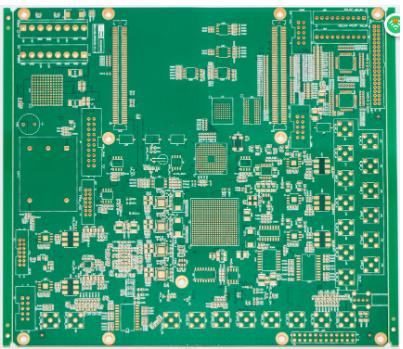One. Basic knowledge of PCB vias
Via is one of the important components of multi-layer PCB, and the cost of drilling usually accounts for 30% to 40% of PCB manufacturing cost. From the function of vias, it can be divided into two types: electrical connection between layers and fixing or positioning of devices. Vias from the process are generally divided into three categories, namely blind vias, buried vias and through vias. Blind vias are located on the top and bottom surfaces of the printed circuit board and have a certain depth. They are used to connect the surface line and the underlying inner line. The depth of the hole usually does not exceed a certain ratio (aperture). Buried hole refers to the connection hole located in the inner layer of the printed circuit board, which does not extend to the surface of the circuit board. The above two types of holes are located in the inner layer of the circuit board, and are completed by a through-hole forming process before lamination, and several inner layers may be overlapped during the formation of the via. The third type is called a through hole, which penetrates the entire circuit board and can be used for internal interconnection or as a component mounting positioning hole. Because the through hole is easier to implement in the process and the cost is lower, most printed circuit boards use it instead of the other two types of via holes. From a design point of view, a via is mainly composed of a drill hole in the middle and a pad area around the drill hole. The size of these two parts determines the size of the via. The smaller the via, the smaller its own parasitic capacitance, which is suitable for high-speed circuits. However, the reduction of hole size also brings about an increase in cost, and is also limited by process technologies such as drilling and plating.

two. About parasitic capacitance of vias
Parasitic Capacitance of Vias The via itself has stray capacitances to the parasitic ground. The main effect of the parasitic capacitance of the vias on the circuit is to prolong the rise time of the signal and reduce the speed of the circuit. Although the effect of the rise delay caused by the parasitic capacitance of a single via is not very obvious, if the via is used multiple times in the trace to switch between layers, the designer should still consider carefully.
three. About parasitic inductance of vias
Parasitic capacitances exist in vias as well as parasitic inductances. In the design of high-speed digital circuits, the harm caused by parasitic inductances of vias is often greater than the impact of parasitic capacitance. Its parasitic series inductance will weaken the contribution of the bypass capacitor and weaken the filtering effect of the entire power system. The diameter of the via has a small effect on the inductance, and the length of the via has the greatest effect on the inductance. The impedance generated by the via hole can no longer be ignored when there is a high-frequency current passing through. Pay special attention to the fact that the bypass capacitor needs to pass through two via holes when connecting the power layer and the ground layer, so that the parasitic inductance of the via hole will be doubled Increase.
Four, about the use of vias
1. Considering both cost and signal quality, choose a reasonable size via size. If necessary, you can consider using different sizes of vias. For example, for power or ground vias, you can consider using a larger size to reduce impedance, and for signal traces, you can use smaller vias. Of course, as the size of the via decreases, the corresponding cost will increase.
2. The two formulas discussed above can be concluded that using a thinner PCB is beneficial to reduce the two parasitic parameters of the via.
3. Try not to change the layers of the signal traces on the PCB board, that is, try not to use unnecessary vias.
4. The pins of the power supply and the ground should be drilled nearby, and the lead between the via and the pin should be as short as possible. Consider drilling multiple vias in parallel to reduce the equivalent inductance.
5. Place some grounded vias near the vias of the signal change layer to provide the nearest return path for the signal. You can even place some redundant ground vias on the PCB.
6. For high-density high-speed PCB boards, you can consider using micro vias.